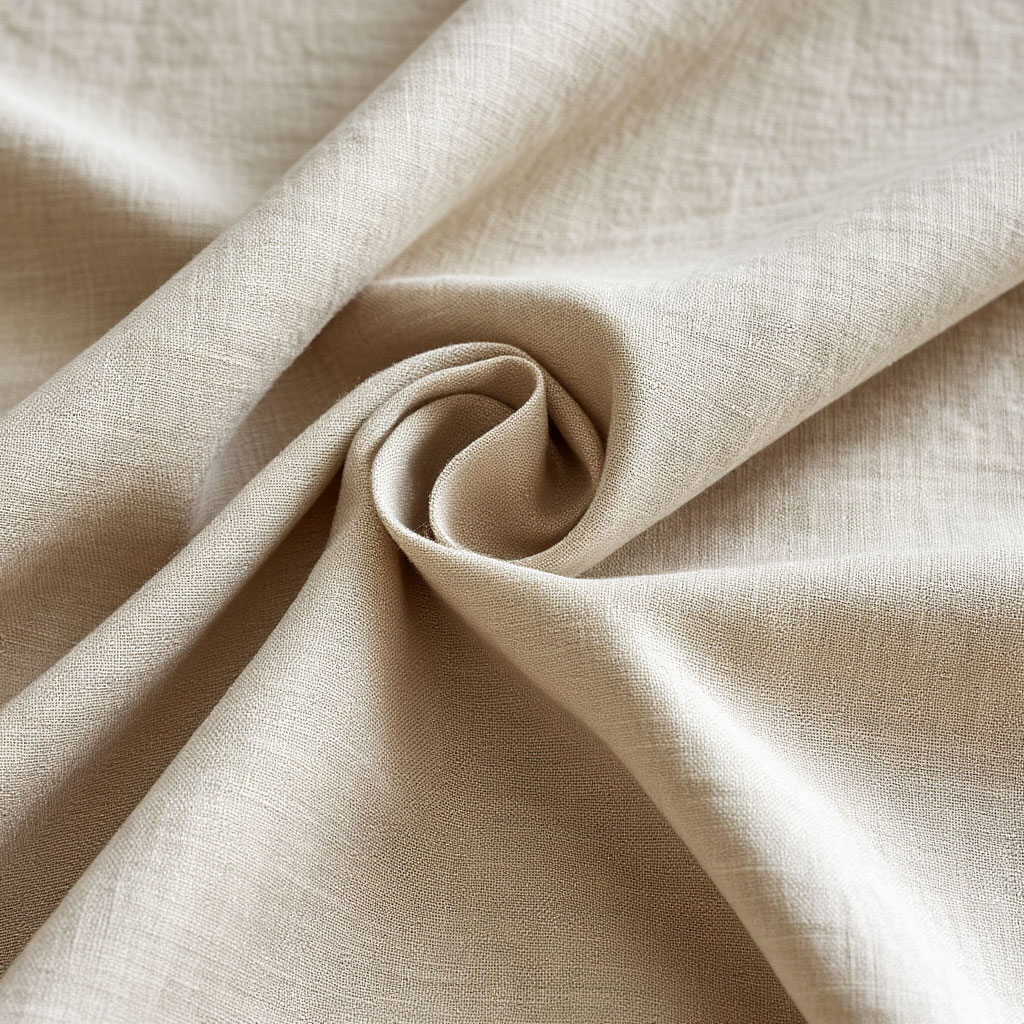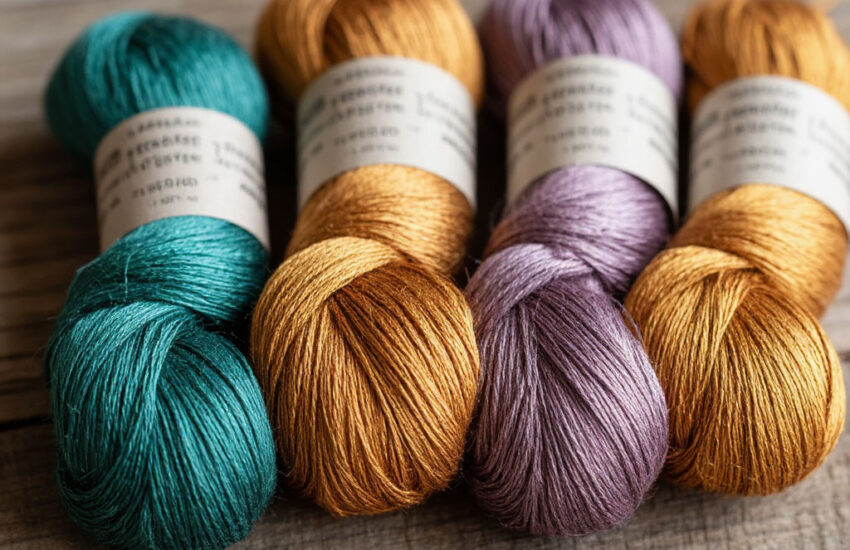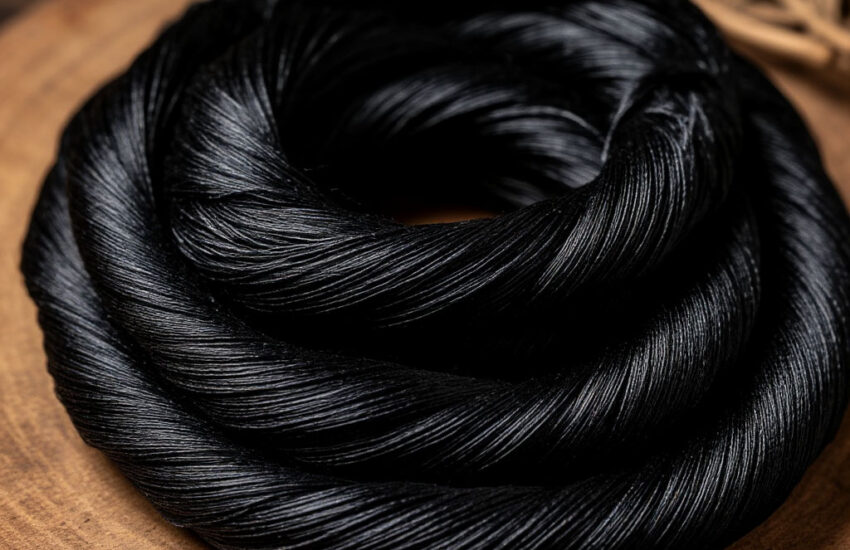Organic Cotton Fabric: Why It’s Better for You and the Planet
Contents
- 1 Why Organic Cotton Is Worth the Investment
- 2 Certifications to Look for in Organic Cotton
- 3 Why Multiple Certifications Matter
- 4 How Organic Cotton Farming Saves Water
- 5 Top Brands Leading the 100% Organic Cotton Revolution
In today’s world of fast fashion and disposable clothing, organic cotton fabric stands out as a beacon of sustainability and conscious consumption. Unlike conventional cotton—which accounts for nearly 16% of global insecticide use—organic cotton fabric is grown without toxic pesticides, synthetic fertilizers, or genetically modified seeds. But why does this matter to you?
The truth is, every piece of clothing we wear has an environmental and ethical footprint. Conventional cotton farming drains water supplies, degrades soil, and exposes farmers to harmful chemicals. In contrast, sustainable cotton farming methods prioritize ecological balance, fair wages, and long-term soil health. When you choose GOTS-certified textiles, you’re not just buying a softer, safer fabric—you’re supporting a movement toward cleaner fashion.
Still unsure if switching to organic cotton fabric is worth it? Let’s break down the real benefits of organic cotton, from health perks to environmental impact. By the end of this guide, you’ll see why this isn’t just a trend—it’s the future of responsible fashion. By the end of this article, you’ll be able to download a checklist — a simple guide to working with organic cotton fabric for healthier living and sustainable design.
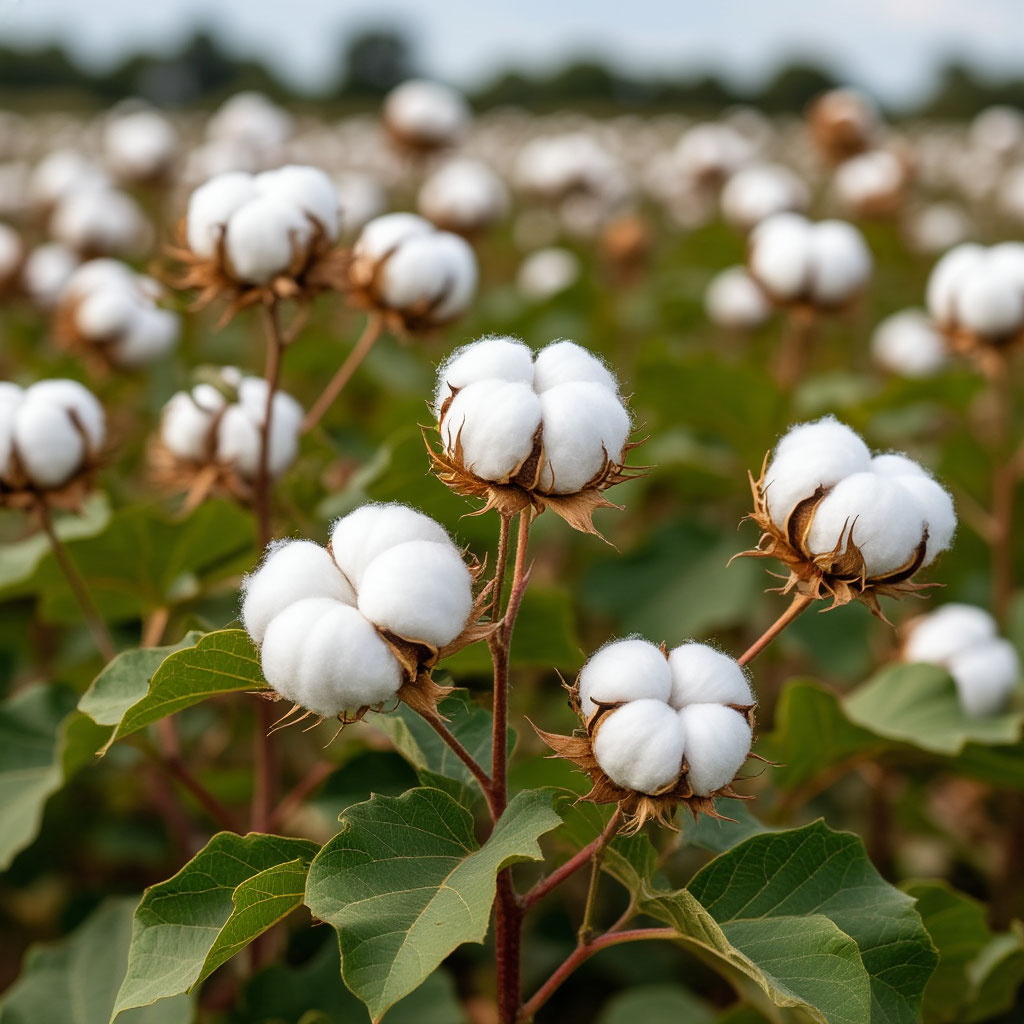
Why Organic Cotton Is Worth the Investment
When weighing organic vs. conventional cotton, the choice becomes clear once you understand the full picture. While organic options may carry a 20-30% higher price tag initially, the long-term benefits of organic cotton fabric make it one of the smartest investments you can make – for your health, the environment, and even your finances over time. Let’s examine why sustainable cotton farming practices create superior GOTS-certified textiles that outperform conventional alternatives in every meaningful way.
1. Unmatched Health Advantages of Organic Cotton Fabric
The disturbing truth about conventional cotton? It accounts for 6% of global pesticide use despite using just 2.4% of farmland. These toxic chemicals don’t just disappear – residue remains in finished fabrics. Organic cotton fabric eliminates these risks through:
✔ Chemical-free cultivation – Grown without synthetic pesticides, herbicides, or GMO seeds
✔ Non-toxic processing – GOTS-certified textiles prohibit harmful dyes and finishing chemicals
✔ Natural hypoallergenic properties – Ideal for sensitive skin, babies, and allergy sufferers
Studies show conventional cotton fabrics can contain traces of:
- Formaldehyde (used for wrinkle resistance)
- Heavy metals (from certain dyes)
- Chlorine bleach (used in whitening)
By choosing organic cotton fabric, you eliminate exposure to these concerning substances while enjoying:
- Better breathability (reduces skin irritation)
- Superior moisture-wicking (keeps you comfortable)
- Temperature regulation (warmer in winter, cooler in summer)
2. Environmental Superiority of Sustainable Cotton Farming
The ecological impact of organic vs. conventional cotton reveals one of fashion’s dirtiest secrets. Conventional cotton farming:
- Consumes 2,700 liters of water per t-shirt
- Degrades soil through monocropping
- Pollutes waterways with pesticide runoff
Sustainable cotton farming methods solve these problems through:
Water Conservation (91% Less Usage)
Organic systems use:
- Rain-fed irrigation (relying on natural rainfall)
- Drip irrigation (targeted water delivery)
- Healthy soil retention (holds moisture better)
Carbon Sequestration
Organic fields:
- Absorb 46% more CO2 than conventional
- Rebuild topsoil through crop rotation
- Avoid synthetic fertilizers (major GHG emitters)
Biodiversity Protection
GOTS-certified textiles come from farms that:
- Avoid toxic pesticides that kill pollinators
- Use natural pest control (like beneficial insects)
- Maintain ecological balance
3. Long-Term Durability of Organic Cotton Fabric
Contrary to myths, organic cotton fabric often outlasts conventional options because:
✔ Stronger natural fibers (not weakened by chemicals)
✔ Gentler processing (preserves fiber integrity)
✔ Higher quality standards (especially in GOTS-certified textiles)
Real-world benefits include:
- 50+ washes without significant wear
- Less pilling and fading
- Maintains shape better over time
This durability means:
→ Fewer replacements needed
→ Lower cost per wear
→ Reduced fashion waste
4. Ethical Advantages You Can Feel Good About
Every purchase of organic cotton fabric supports:
✔ Fair wages for farmers (conventional cotton relies on exploited labor)
✔ Safe working conditions (no exposure to toxic chemicals)
✔ Community development (many organic programs fund schools/clinics)
GOTS-certified textiles require:
- No child or forced labor
- Living wages
- Worker safety protections
5. Cost Analysis: Why Organic Pays for Itself
While pricier upfront, organic cotton fabric offers financial benefits through:
Healthcare Savings
- Reduced allergy/skin treatment costs
- Lower long-term toxin exposure risks
Replacement Savings
- Lasts 2-3x longer than fast fashion cotton
- Maintains quality through hundreds of wears
Environmental Cost Reduction
- Supports water conservation
- Reduces pollution cleanup burdens

Certifications to Look for in Organic Cotton
With greenwashing rampant in the fashion industry, how can you be sure you’re getting genuine organic cotton fabric? The answer lies in third-party certifications. These labels verify that products meet strict environmental and ethical standards from farm to finished garment. Let’s decode the most important certifications for sustainable cotton farming and why they matter when choosing GOTS-certified textiles or other organic products.
1. Global Organic Textile Standard (GOTS) – The Gold Standard
When examining organic vs. conventional cotton products, GOTS certification represents the highest level of assurance. This rigorous standard covers:
✔ Organic Fiber Requirements
- Minimum 70% organic fibers (95% for “organic” label)
- Remaining fibers must meet strict environmental criteria
✔ Chemical Restrictions
- Bans toxic dyes, formaldehyde, and heavy metals
- Requires biodegradable wetting agents
✔ Social Compliance
- Fair wages and safe working conditions
- No child or forced labor
✔ Environmental Manufacturing
- Wastewater treatment requirements
- Energy reduction targets
Why It Matters:
A GOTS-certified textiles label means every step – from cotton farming to final stitching – meets internationally recognized organic and ethical standards.
2. Organic Content Standard (OCS) – Tracking Organic Materials
While less comprehensive than GOTS, OCS provides important verification:
- OCS 100: Contains 95-100% organic material
- OCS Blended: Contains 5-94% organic material
Key Differences from GOTS:
→ Only tracks organic content
→ Doesn’t address chemical use or labor conditions
→ Useful for brands transitioning to organic
Best For:
Consumers wanting confirmation of organic fiber content without full sustainable cotton farming requirements.
3. OEKO-TEX® Standards – Chemical Safety Assurance
These complementary certifications focus on human health:
✔ STANDARD 100
- Tests for 350+ harmful substances
- Includes all components (threads, buttons, etc.)
✔ MADE IN GREEN
- Adds ethical production verification
- Provides transparent supply chain
Why Choose OEKO-TEX®?
Even if not fully organic, these ensure products are free from:
- Allergenic dyes
- Phthalates
- Heavy metals
4. Fair Trade Certified – Ethical Production Guarantee
While not specific to organic cotton fabric, this certification ensures:
✔ Fair prices for cotton farmers
✔ Community development premiums
✔ Environmental protection requirements
Impact:
Fair Trade cotton farms show:
- 34% higher income for farmers
- 50% more investment in community projects
5. USDA Organic – Agricultural Standard
The familiar food certification also applies to cotton:
- Requires 95% organic ingredients
- Prohibits GMOs and synthetic pesticides
- Annual on-farm inspections
Limitation:
Only covers farming, not processing or manufacturing.
How to Spot Fake “Organic” Claims
With benefits of organic cotton driving demand, some brands make misleading claims. Watch for:
- Vague terms like “natural” or “eco-friendly” without certification
Only partial certification (e.g., organic farming but conventional dyeing)
Small print disclosures (“made with organic cotton” might mean just 5%)
Verification Tip:
Always check certification databases – most organizations maintain online lists of certified brands.
Why Multiple Certifications Matter
The most trustworthy organic cotton fabric combines:
- GOTS (processing standards)
- USDA Organic or OCS (farming verification)
- Fair Trade (ethical assurance)
For example:
A GOTS-certified textiles product with Fair Trade certification offers both environmental and social guarantees.
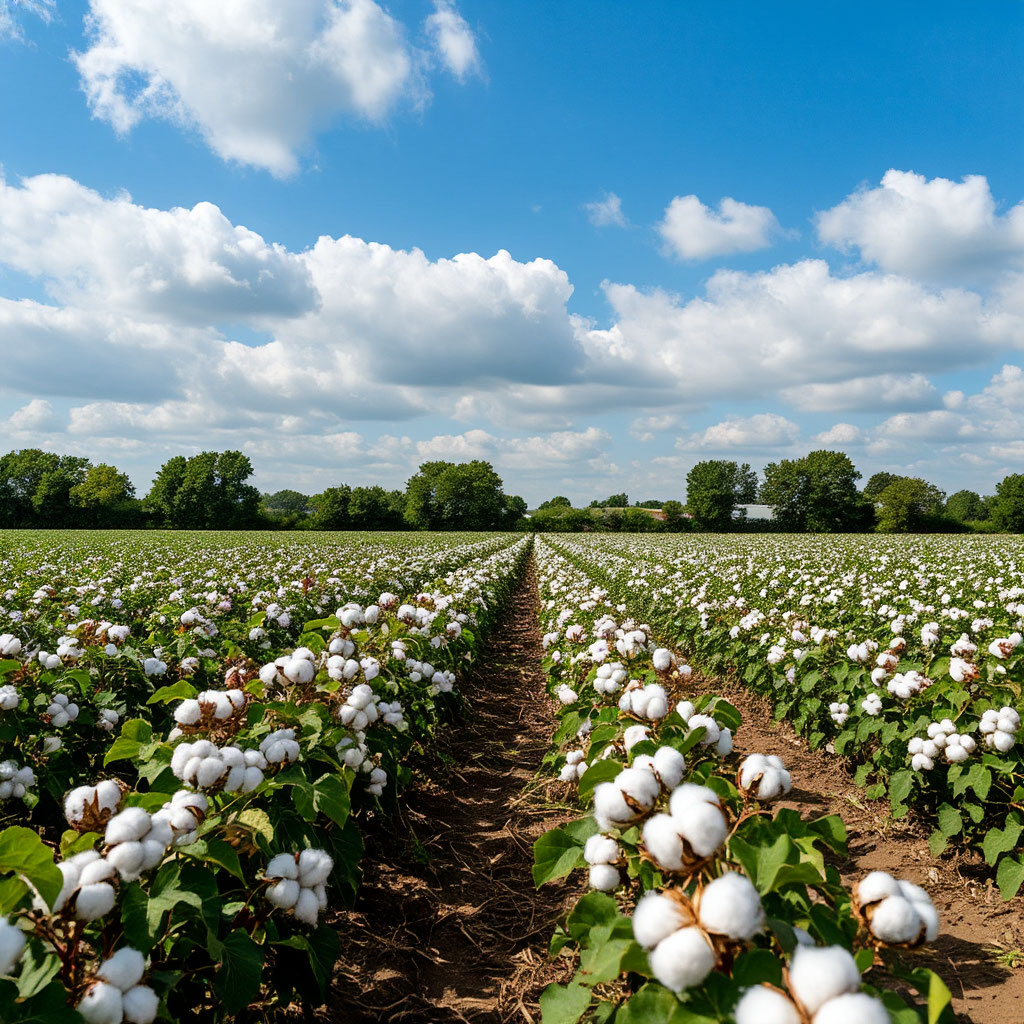
How Organic Cotton Farming Saves Water
The shocking truth about conventional cotton? It takes 2,700 liters of water to produce just one t-shirt—enough drinking water for one person for 2.5 years. But organic cotton fabric changes this equation dramatically. Let’s explore how sustainable cotton farming techniques are revolutionizing water conservation in the textile industry.
1. The Water Crisis in Conventional Cotton Farming
Before understanding how organic cotton fabric saves water, we must examine why conventional cotton is so wasteful:
✔ Flood Irrigation Dominates
- 80% of conventional cotton fields use inefficient flood irrigation
- Up to 60% of water evaporates before reaching roots
✔ Chemical Dependence Worsens Drought
- Synthetic fertilizers create hard, compacted soil
- Pesticides kill beneficial microbes that help retain moisture
✔ Polluted Runoff Contaminates Supplies
- Cotton farming accounts for 16% of global insecticide use
- These chemicals seep into groundwater and rivers
2. How Organic Cotton Farming Cuts Water Use by 91%
Sustainable cotton farming employs revolutionary techniques to slash water consumption:
A. Rain-Fed Irrigation (Nature’s Solution)
- 78% of organic cotton relies solely on rainfall
- Eliminates need for artificial irrigation systems
- Works with natural weather patterns
B. Healthier Soil = Better Water Retention
Organic fields maintain moisture through:
- Cover cropping (reduces evaporation)
- Compost enrichment (holds water like a sponge)
- No-till practices (preserves soil structure)
Result: Organic soils hold 20-40% more water than conventional fields.
C. Precision Drip Irrigation (When Needed)
The small percentage of organic farms that irrigate use:
- Targeted drip systems (90% efficiency vs. 60% for flood)
- Moisture sensors to prevent overwatering
- Recycled rainwater collection systems
3. The Ripple Effect: How Water Savings Help Communities
Choosing GOTS-certified textiles creates positive chain reactions:
✔ Preserves Drinking Water
- In India, organic cotton projects increased local water tables by 30%
✔ Protects Farmer Livelihoods
- Drought-resistant organic crops provide more reliable harvests
✔ Restores Ecosystems
- Cleaner runoff means healthier rivers and aquatic life
4. Climate Change Resilience
As droughts intensify globally, organic cotton fabric offers solutions:
- Drought-resistant varieties perform better in dry conditions
- Carbon-rich soils better withstand extreme weather
- Lower failure rates compared to conventional cotton
5. What This Means for Conscious Consumers
Every organic cotton fabric purchase directly impacts water conservation:
- 1 organic t-shirt saves 2,457 liters vs conventional
- A wardrobe of 20 organic pieces preserves 49,140 liters
- Equivalent to 17 years of drinking water for one person
Top Brands Leading the 100% Organic Cotton Revolution
The fashion industry is undergoing a quiet transformation as visionary brands embrace organic cotton fabric at scale. These pioneers prove that sustainable cotton farming can meet commercial demands while maintaining ethical and environmental integrity. Below, we examine the companies setting the standard for GOTS-certified textiles and 100% organic apparel.
1. Patagonia: The Outdoor Industry’s Sustainability Vanguard
Why They Stand Out:
- Committed to 100% organic cotton since 1996
- Transparent supply chain with Fair Trade certification
- Invests in regenerative organic agriculture
Notable Initiatives:
- Cotton in Conversion program helps farmers transition to organic
- Worn Wear program extends garment lifespan through repairs
Product Highlight:
Their Organic Cotton Stand-Up Shorts demonstrate how organic cotton fabric performs for active lifestyles.
2. People Tree: Fair Fashion Pioneer
Why They Stand Out:
- First fashion brand to achieve GOTS certification
- Works with fair trade artisans in developing countries
- Combines traditional craftsmanship with sustainable cotton farming
Innovative Practices:
- Uses natural dyes for colorfast organic cotton
- Implements zero-waste pattern cutting
Signature Piece:
The GOTS-certified textiles in their wrap dresses set the bar for ethical elegance.
3. Pact: Affordable Organic Essentials
Why They Stand Out:
- Makes organic cotton fabric accessible at mainstream prices
- Entire supply chain is Fair Trade Certified
- Focuses on carbon-neutral shipping
Consumer Impact:
- For every item sold, Pact funds clean water projects in cotton-growing regions
Best Seller:
Their Organic Cotton Crew Socks prove basics can be both ethical and economical.
4. Thought (formerly Braintree): Timeless Organic Style
Why They Stand Out:
- Specializes in breathable organic cotton fabric for all seasons
- Uses low-impact dyes exclusively
- Designs for longevity over trends
Sustainable Innovation:
- Incorporates hemp blends for enhanced durability
- Partners with women-owned factories
Standout Product:
The Organic Cotton Harrington Jacket showcases their sustainable tailoring.
5. Kotn: Traceable Farm-to-Closet Model
Why They Stand Out:
- Direct relationships with Egyptian organic cotton farmers
- Transparent pricing shows true production costs
- Invests in farmer education programs
Unique Approach:
- Grows its own heritage cotton varieties
- Provides school funding with every purchase
Must-Have Item:
Their Organic Cotton Ribbed Tank exemplifies premium GOTS-certified textiles.
Emerging Brands to Watch
The organic movement continues growing with innovative newcomers:
1. Organic Basics
- Focuses on scientific fabric innovation
- Uses recycled organic cotton in newer lines
2. TAMGA Designs
- Combines organic cotton fabric with vibrant prints
- Supports artisan communities in Bangladesh
3. PACT Organic
- Specializes in family-focused organic apparel
- Implements closed-loop water systems
What These Brands Prove About the Market
- Quality Doesn’t Require Compromise
The durability of organic cotton fabric in these products disproves the myth that sustainable fashion can’t compete. - Scalability is Possible
From Patagonia’s outdoor gear to Pact’s basics, these brands demonstrate sustainable cotton farming can meet mass demand. - Consumer Demand is Growing
The expansion of these companies reflects increasing awareness of benefits of organic cotton among shoppers.
How to Verify Brand Claims
Even among eco-conscious brands, greenwashing exists. Always look for:
✔ Certification logos (GOTS, OCS, Fair Trade)
✔ Supply chain transparency
✔ Water/conservation commitments
✔ Third-party audit reports
Switching to organic cotton fabric isn’t just a personal upgrade—it’s a global movement. From reducing pesticide use to saving water and supporting ethical labor, every purchase makes a difference.
The next time you shop for clothes, bedding, or even towels, ask yourself: Do I want my choices to harm or heal the planet? If the answer is clear, then organic cotton is the way to go. You can now download an organic cotton fabric checklist — a practical tool to help you choose, care for, and create with this eco-friendly material while supporting a cleaner planet.
